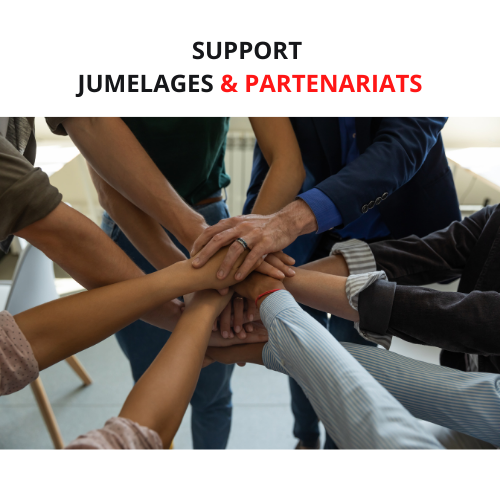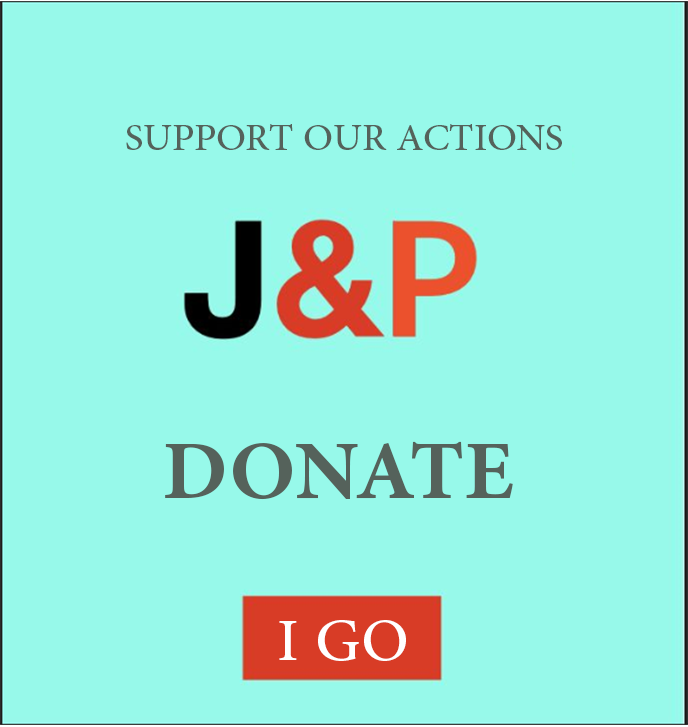THAILAND - ECOLOGY: At the Sahainan farm in Nan province, a "green" dream come true
Other ways of producing our food and considering our relationship to the land are possible. Erika Messi tells Gavroche about permaculture on the Sahainan farm. The story of Sahainan, an educational farm practising organic agriculture within the framework of permaculture, nestled on a hillside in the forest some 70 kilometres north of Nan, is first and foremost that of a journey, first individual, then family.

A report by Erika Messi
This course is first and foremost Sandot's, or rather "adjan" Sandot as he is called by the trainees who spend about ten days in training on his property, as well as by the local authorities, impressed and impressed by his work.A simple farmer, moreover outside the circuits of agribusiness and mass tourism, can attract to his farm entire songthew of young Farangs - many of them French - eager for knowledge and know-how specific to permaculture. For the anecdote moreover, the policemen of the modest village of Thung Chang started by looking with a suspicious eye at these Westerners that Sandot's antique Mazda pick-up truck was recovering in front of the only 7/11 of the village, suspecting illicit activities, tracking down in They were surprised and impressed by the studious atmosphere and were the first to give it "adjan"!
An extraordinary journey
It must be said that the character, like his journey, is out of the ordinary and forces admiration: born in Pai in a modest farming family, became an electrical engineer to escape from poverty and lack of consideration, Sandot n'In fact, Sandot never stopped fantasizing about his "return to the land", to the point of expatriating himself for 6 years to work in Saudi Arabia in order to give himself the financial means to do so.An experience which, by contrast, confirmed his attachment to human values rather than money, as well as to a simple life in harmony with nature, far from the galloping artificialization of ultra-modern cities built in the middle of the desert.
And yet, as proof that the dominant models are not being broken away from in a snap of the fingers, he turns to a monoculture reputed to be profitable when he returns to Pai, investing his savings in a mango tree plantation... and reHe realized that this made him a prisoner of a market that he and the other producers had no control over, nor did it exempt him from buying his own food, which is the last straw for those who work the land that is supposed to be their food!
Back to polyculture
It is here that his path towards a return to polyculture, to more environmentally friendly methods - those used by his ancestors, who had been using the same methods for many years - became clear.This is where his journey towards a return to polyculture and more environmentally friendly methods - those used by his ancestors before agro-business companies converted them to chemical fertilizers and other plant protection products - began, with the primary goal of self-sufficiency: Like a Mr Jourdain of agriculture, Sandot was already doing permaculture without knowing it! It was the visit of the managers of the Pun Pun Organic Farm, located north of Chiang Mai, that was the trigger: it was they who introduced him not only to the term "permaculture", but also to the founding writings of this relationship to the land, notably those of Australian scientist Bill Mollison. It was, if not a revelation, at least a confirmation of what Sandot had already understood: yes, monocultures deplete the soil; no, chemical fertilizers are not the solution to soil depletion; and what's good for nature is good for the environment.And what is good for nature is good for mankind, so an emancipation from the excesses of the agro-productive system can only be desirable, not only for farmers, but for society as a whole. But this implies a complete reconsideration of one's way of life, because permaculture is not just organic farming, it is a systemic approach that has well integrated that productivism and consumer society go hand in hand, and that you can hardly emancipate yourself from one without emancipating yourself from the other if you want to avoid damaging your environment!
Natural fertilizers
That's why Sandot's approach goes far beyond working the soil with natural fertilizers. It includes, for example, combinations of plants depending not only on the soil and the "micro-climate" (moisture content, sun and wind exposure on a hillside - or a simple mound!), but possible symbioses between them, the most obvious example being the lemongrass bushes that Sandot surrounds his rice plots with, which rather than killing all the insects, repel those that might attack it. Rice cultivation without machinery - since it is one of the principles of permaculture to get as much out of fossil fuels as possible, and therefore out of the machines that use them - is a very important part of the process. requires a lot of effort and a very physical relationship to the land, between preparing the soil with a spade and transplanting the shoots with thumb force, one by one if they're young! But one should not believe that permaculture necessarily rhymes with drudgery and lumbago : On the contrary, its foundation, a well-dosed mix of common sense and creativity, consists in "letting nature work for us", for example by using crop rotations and legumes to regenerate the soil in nitrogen. The Asian flora and diet is rich in soya, peanuts and other beans, allowing, for example, the adaptation of the ancestral system of the "3 sisters" in South America: corn-bean-pumpkin, the 1st plant providing the 2nd with support to grow, the 2nd providing nitrogen, and the 3rd, with its large leaves close to the ground, providing protection both from the sun and evaporation and from the potentially destructive impact of the drops during heavy rains.
A source of pure water
Access to and management of water is the key to everything else: it was precisely the presence of a pure water source at the top of the Sahainan property that decided Sandot and his companion Shen to acquire it after the end of their first educational farm adventure in Pai, victim of its success.s but especially of the transformation of this small peaceful village of farmers into a quasi-permanent Woodstock festival, attracting to the farm young Western volunteers... not so volunteers, or at least easily distracted from their task by the prospect of a concert or a village festival. Sandot and Shen were exhausted to train them so that in the end they would slip away after a few days despite their commitment: This, combined with the growing difficulty for the Pai farmers to live with this new population whose rhythm of life is so totally different from their own, and the sadness of witnessing the droughts and the droughts in the village, made it increasingly difficult for them to live with the new population.This, combined with the growing difficulty for the farmers of Pai to live with this new population whose rhythm of life is so totally different from their own, as well as the sadness of witnessing the droughts of this tourism in the process of massification and a form of "dispossession" of their territory, decided 5 years ago that they should leave for the Nan mountains, which are still largely preserved.
The careful study of the potentialities of this land which was for sale ("observe and interact" is the 1st of the 12 principles of David Holmgren, another "founding father" of permaculture), 2 hectares all in slopes - as Sandot says, "when you walk in Sahainan, you are either going up or down" - and especially the presence of this perfectly drinkable water source on the property, decided the rest. For it is this source that allows Saihananan to get out of the water supply and drainage system, which is not in keeping with their ideals - the tap water is chlorinated in order to be de-chlorinated.The treatment of waste water uses chemicals - to better apply their principles of circular ecology: this beneficial water that comes out of the earth goes directly back into the earth, leaving it up to them to ensure that it is assimilated and even beneficial to nature even after use. This implies, for example, that the "black water" from the toilets will directly fertilize a garden designed for this purpose, and that the "grey water" from the toilets will be used to fertilize the garden."The combination of food particles and moisture attracts worms, ensuring good tillage: once again "nature works for us" - provided that no dishwashing liquid is used - the ashes from the brazier used for cooking perfectly fulfils this function - nor too much soap, because even its organic nature would risk unbalancing the pH of the soil.
A constant commitment
So obviously, this constant commitment not to harm the environment implies a way of life that Sandot joyfully calls "the simple life" but which, in the eyes of visiting city dwellers, may appear to be a "simple life", a way of life that is not only a way of life, but also a way of life that is not only a way of life, but also a way of life that is not only a way of life.This is because it goes much further than buying organic vegetables, maintaining a compost bin on one's balcony and choosing low-energy light bulbs: In Sahainan, electricity comes exclusively from solar panels, so low consumption is not just an option, it's an obligation! And yet, what a satisfaction that this autarky, total on the food plan thanks to this true garden of Eden and almost complete on the others, especially in these times of pandemic and the collapse of foreign tourism, which should push many Thai people to return to their countryside and to get back to their homes.It is in any case what Sandot and Shen hope for, because they chose to "...".consume their products and sell their knowledge", are more than ready to accompany these "returns to the land"...They are more than ready to support these "returns to the land", whether through their consulting activity that they can carry out remotely to help future farmers design the layout of their crops and buildings, or through the various training courses they run every month (with, for example, a "generalist" formula in 8800 baht for 10 days, including accommodation and meals, offering a varied programme combining theory and practice, from the art of making a successful compost to the art of weaving bamboo baskets, including tillage, cutting and eco-construction techniques; other more specialised training courses are possible).
For the anecdote, these courses were so successful before the closure of the borders because of Covid that about a year ago, Shen had for a while cherished the hope that the profits could be invested in the construction of a new plant.a house more comfortable than their present - picturesque and functional, but rustic - teak and bamboo home... and then came a terrible dry season, reminding everyone of this iron rule of nature: Without water, nothing is possible. Especially not agriculture. So Shen willingly gave up the house of his dreams in favour of buying a giant tank to store both spring water and rainwater, ensuring that the water would not be wasted.Even in the event of a hard blow to their operation - and that of their neighbours, self-consumption obviously not being synonymous with withdrawal, as the couple's strong investment in the Thung Chang community proves - would survive.
And we can only rejoice, so precious is this place which, on its scale, gives substance to the anti-globalization motto: "another world is possible".
Source: www.gavroche-thailande.com


